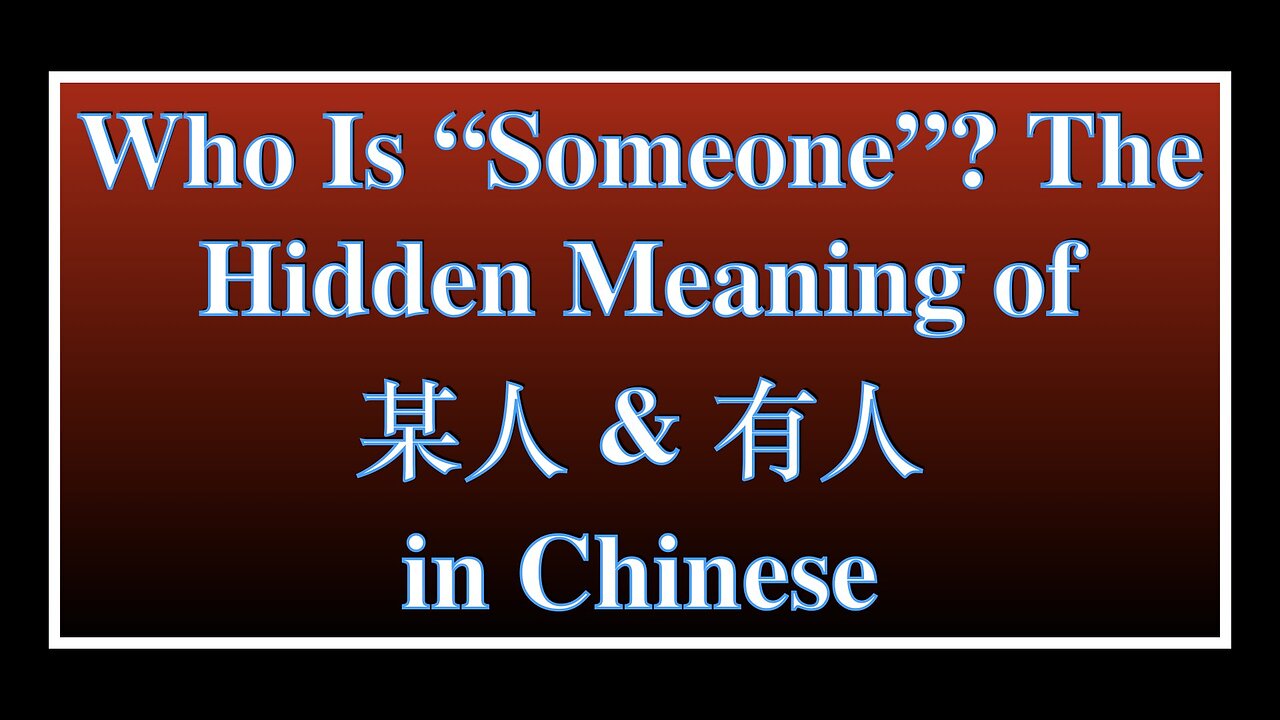Premium Only Content

Who Is “Someone”? The Hidden Meaning of 某人 & 有人 in Chinese
In this episode, we explore the subtle art of indirect reference (间接指称 jiànjiē zhǐchēng) in modern Chinese, based on Fu Qingqing’s 2025 study from Shanghai Normal University.Through real examples—from Weibo humor to People’s Daily reports and literary classics—we uncover how “某人 (mǒu rén)” and “有人 (yǒu rén)” shape communication.Why do Chinese speakers hide names? How do these words signal politeness, mystery, or irony?Learn how 某人 and 有人 reflect Chinese values of harmony, face (面子 miànzi), and emotional balance.Perfect for learners of Chinese language, linguistics enthusiasts, and anyone curious about the psychology behind words.
Time Codes
00:00 - Who is "Someone"?
00:43 - Part 1 – Background: What is Indirect Reference?
01:53 - Part 2 – Shared Ground: How 某人 and 有人 Overlap
02:45 - Part 3 – Their Differences
03:51 - Part 4 – Context and Tone
04:57 - Part 5 – Why We Use Them: The Pragmatic Functions
06:27 - Part 6 – Influencing Factors
07:23 - Conclusion & Reflection
08:11 - Reference:
某人 mǒu rén, 有人 yǒu rén, 间接指称 indirect reference, 现代汉语 Modern Chinese, 语用功能 pragmatic function, 隐含表达 implicit expression, 礼貌策略 politeness strategy, 语境 context, 面子 miànzi, 朱自清 Zhu Ziqing, 文学用语 literary language, 模糊性 fuzziness, Chinese pragmatics, cross-cultural communication, indirectness in language.
#learnchineseintermediate #Compassion #ChineseCulture #AnimalEthics #MindfulLanguage #ChineseProverbs #Empathy #LanguageLearning #CulturalWisdom #Kindness #ChineseIdioms
-
 LIVE
LIVE
Wendy Bell Radio
5 hours agoLong Live The King
7,941 watching -
 1:06:37
1:06:37
Chad Prather
8 hours agoFinding God in a Fear Addicted World!
31.9K12 -
 LIVE
LIVE
LFA TV
12 hours agoLIVE & BREAKING NEWS! | MONDAY 10/20/25
3,361 watching -
 LIVE
LIVE
The Chris Salcedo Show
16 hours ago $4.11 earnedThe Left Won't Give Up Totalitarian Power Easily
542 watching -
 LIVE
LIVE
Joe Donuts Live
3 hours ago🟢How It All Began — Mafia: Definitive Edition Story Mode | The Monday Job
106 watching -
 1:38:19
1:38:19
NAG Podcast
15 hours agoSay Something Beyond W/MikeMac: INSURRECTION BARBIE - Ep.10
25.9K4 -
 LIVE
LIVE
TonYGaMinG
2 hours ago💥Midnight Walkers last day of playtest!
41 watching -
 LIVE
LIVE
FyrBorne
12 hours ago🔴Battlefield 6 Live M&K Gameplay: How To Snipe Without Target Finder
50 watching -
 13:29
13:29
Daniel Davis Deep Dive
1 day agoCol Doug Macgregor: NATO Hungry for MORE WAR
20.2K3 -
 8:27
8:27
BlackDiamondGunsandGear
1 year agoThis 100 Year old Shotgun, is Full Auto?
16.5K5